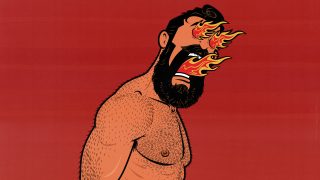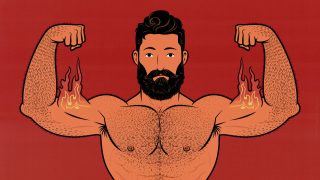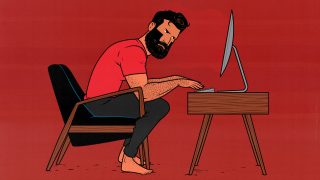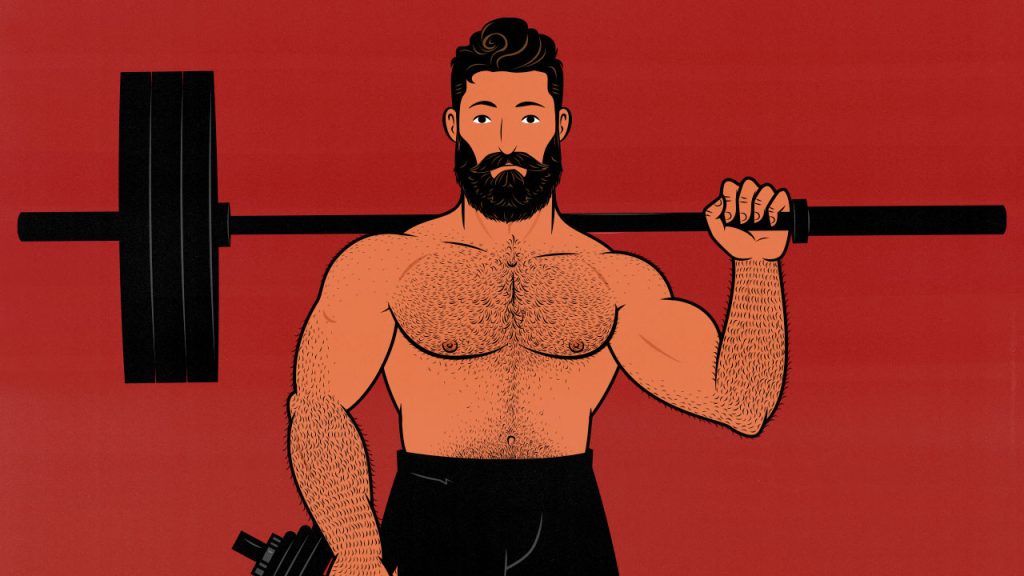
How Many Calories Does Weight Lifting Burn? (With Calculator)
How many calories you burn while lifting weights depends on how much you weigh and how much lean mass you’re carrying. It also depends on how much weight you’re lifting, how long you’re resting, and how long your workout is. It quickly gets complicated.
Fortunately, we have Greg Nuckols, MA, who reviews muscle and strength research on his site, Stronger by Science. He figured out a simple heuristic for estimating how many calories a workout burns. I’ve built his formula into a simple calorie calculator you can use.
All we need to know is your weight, body fat percentage, and the length of your workout.
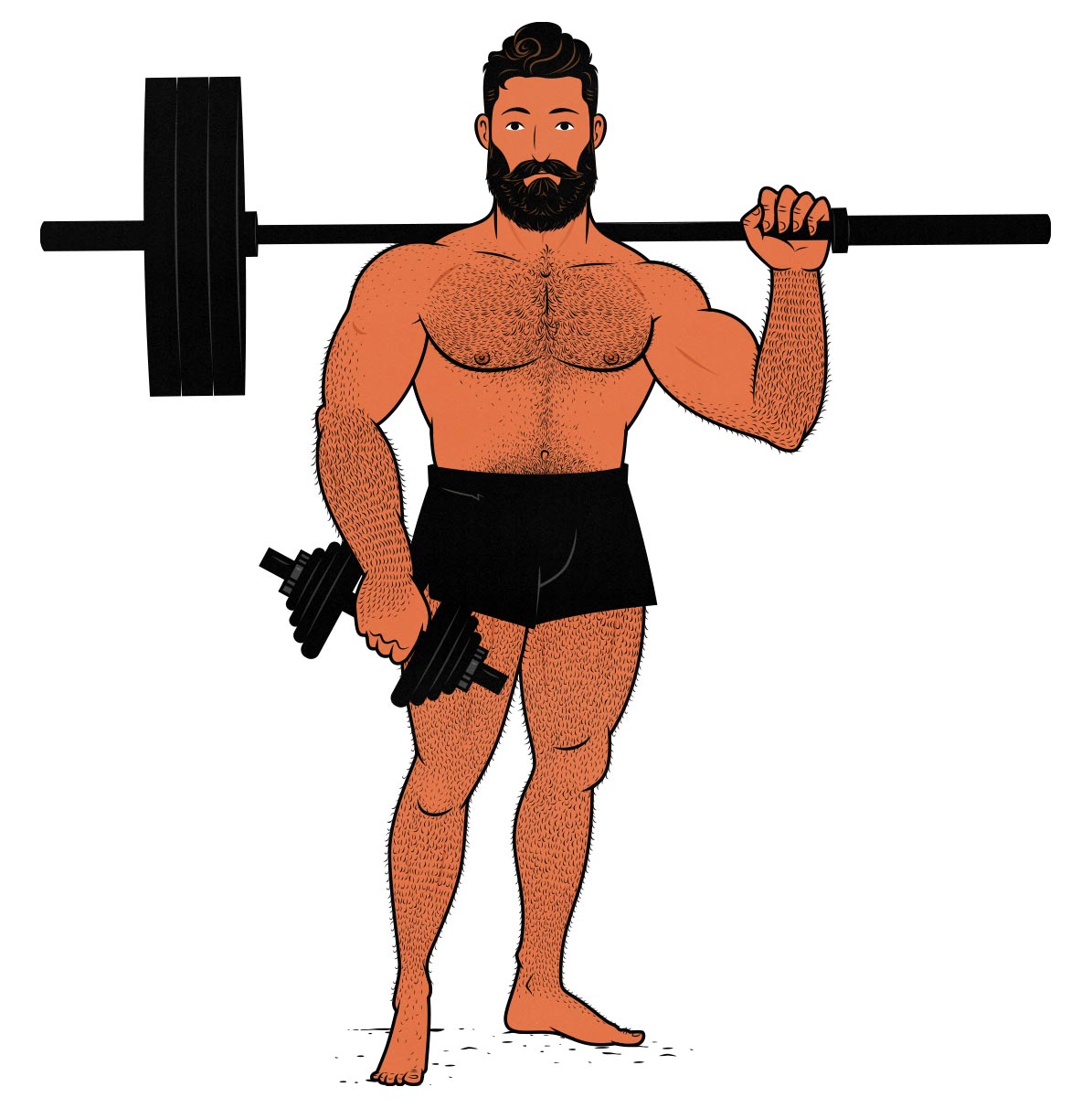
The Weight Lifting Calorie Calculator
The more weight you lift, the more calories you’ll burn, but the longer it will take to recover your strength. The less weight you lift, the fewer calories you’ll burn, but the sooner you can begin your next set. In either case, as long as you aren’t squandering your time in the gym, you’ll burn a similar number of calories.
The next thing to consider is what kind of training you’re doing. If you’re doing hypertrophy training, with your squats and pull-ups, deadlifts and push-ups supersetted together, you can burn a tremendous number of calories. If you’re doing an extended forearm workout, you’ll burn far less. All the workouts in all our programs are more like the former than the latter. We can bake that into the calculator, too.
That leaves us with just three factors: weight, lean mass, and the length of your workout. To figure out your lean mass, we need to know your body fat percentage. If you don’t know yours, you can calculate it here.
The Cost of Lifting Weights
Calorie Calculator
Then the question becomes, what do you do with this information? Maybe you just want an idea of how many extra calories to eat after training. That’s great. You don’t need to track your calories to get great results. All you need to do is weigh yourself every week and then adjust how much you eat. We’ve got articles on how to eat a bulking diet, how to cut, and what to do if you’re skinny-fat.
The other option is to count calories. If you venture down that path, we’re affiliated with MacroFactor. It’s a calorie-tracking app designed with lifters in mind. It will do all of this math for you, estimating your calorie needs, factoring in your training, and then adjusting your recommendations based on the results you’re getting. If you want to try it, you can get an extended free trial with the code “b2b”. By the time you finish the trial, you’ll have a deeper understanding of calories, the food you eat, and your body overall.
Either way, now that you have a rough idea of how many calories your workout burns, we can talk about practical recommendations.
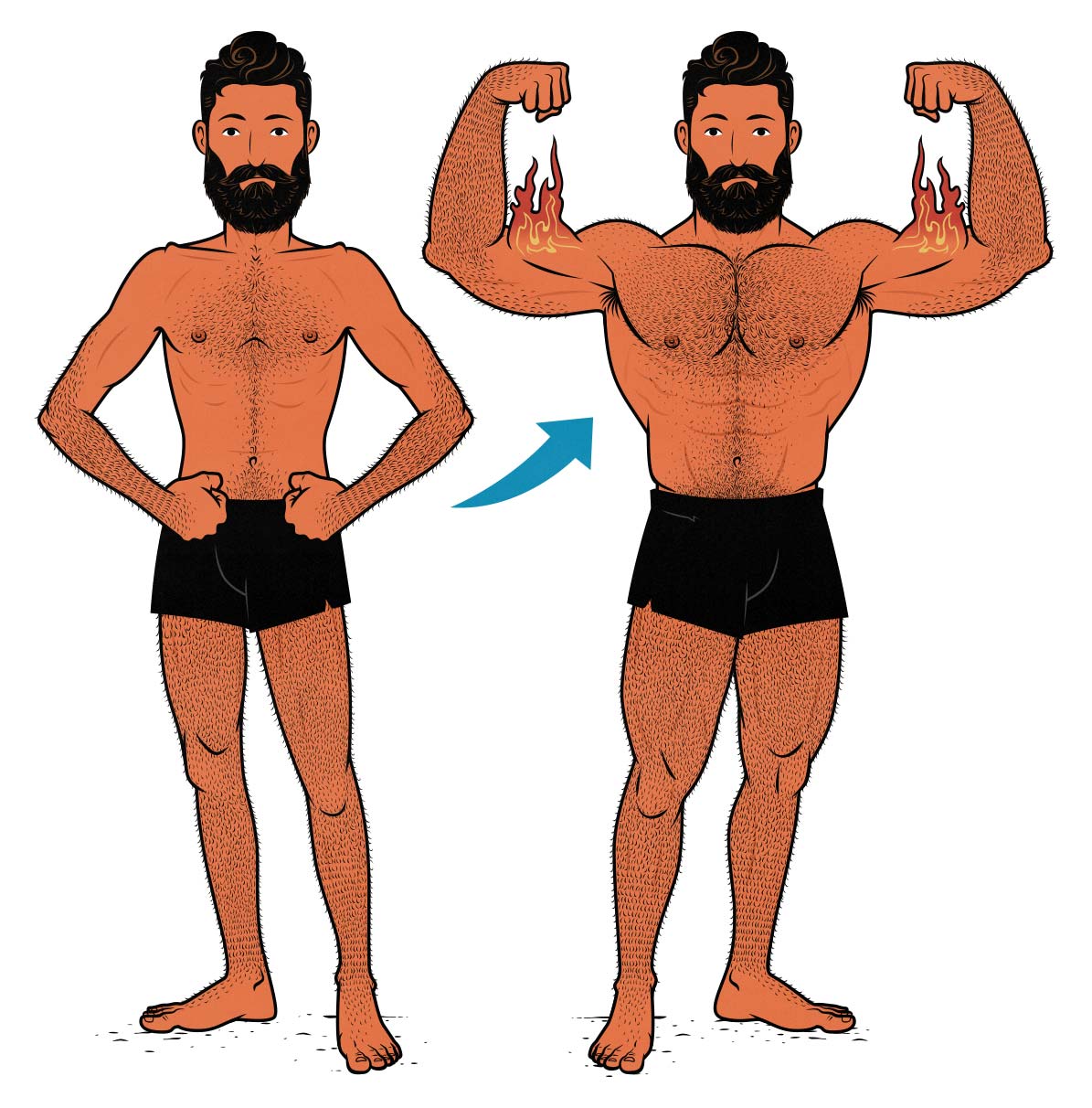
Building Muscle Burns Calories, Too
Lifting weights also stimulates muscle growth, meaning some of the calories you eat will be invested into building bigger muscles. These calories aren’t burned, but they’re certainly used. It takes somewhere between 2,000–3,000 calories to gain a pound of muscle.
Furthermore, muscle is metabolically active. A pound of muscle costs about 12 calories per day to maintain and carry around.
The true benefit of lifting weights isn’t that it burns calories; it’s that building a bigger, stronger, fitter body gives you a heartier appetite and allows you to eat a more abundant and nutritious diet.
Guidelines for Building Muscle
Should You Eat More On Workout Days?
You Should Eat the Calories You Burn. If lifting weights burns 300 calories, you should eat an extra 300 calories that day. That way, you’re eating in the same calorie surplus every day. You don’t need to be super precise about it, but a consistent calorie surplus will help you build muscle more steadily and leanly.
To regain the calories you burned, you could have a workout shake with two scoops of protein, a small handful of trail mix, or a modest dessert after dinner. It isn’t that many calories, but if you have a hard time gaining weight, it’s best not to fall behind.
Note that eating more calories on days when you burn more calories isn’t calorie cycling. Rather, you’re accounting for the calories you’re burning, keeping yourself in a steady surplus. But let’s talk about bonafide calorie cycling for a moment.
You Don’t Need to Cycle Your Calories
Some people like to cycle their calories, driving themselves into a larger calorie surplus on workout days. It used to be incredibly popular, but it doesn’t seem to be standing the test of time. There’s very little research showing any benefit to it.
The idea was that eating more food would encourage more muscle growth. That’s true, but it’s also true on rest days. A good workout stimulates 2–3 days of muscle growth, so if you work out every 2–3 days, your body will always be trying to build muscle. A steady surplus will help you steadily build muscle.
On the other hand, if a strenuous workout awakens your inner appetite, feel free to indulge it. There’s no harm in eating a bit more on workout days and a little less on rest days. For example, if your workout burns 300 calories, you could eat an extra 500 calories that day. (I always eat a little extra after heavy deadlift workouts.)
Post-Workout Shakes
A post-workout shake is a great way to reclaim the calories you burned while lifting weights. It’s especially helpful if you have trouble keeping up with your calories.
When I first started bulking up, lifting weights would completely kill my appetite. So, after my workout, I’d chug a big post-workout shake or bulking smoothie. Those liquid calories would move through my digestive system quickly, allowing me to eat a big meal a couple of hours later.
The simplest post-workout shake is two scoops of protein mixed into water, milk, or a milk alternative (like oat milk). That will get you around 250–350 calories. Or, if you’re near a blender, you could make a smoothie by blending together Greek yogurt, a banana, frozen mixed berries, mixed nuts, a handful of fresh spinach, water, and some quick oats.
Post-Workout Meals
If you’d rather eat your calories than drink them, consider having an especially large post-workout meal. The idea is that your muscles are ravenous for muscle growth, so if you feed them shortly after training, you’ll do an especially good job of building muscle quickly and leanly. Most hypertrophy experts recommend eating a hearty meal within two hours of finishing your workout. That’s good advice, especially if you have trouble keeping up with your calories while bulking.
Guidelines For Burning Fat
You Can Eat the Calories You Burn
When you’re cutting, you still get to eat the calories you burn. As long as you’re in a modest calorie deficit overall, you’ll burn fat just fine. Perhaps more importantly, eating after lifting weights is good for gaining and maintaining muscle mass.
You Can Eat The Extra Calories Before or After Lifting
If you’re deep in a cut, you might feel somewhat depleted. Eating more calories and carbs before working out can pump you full of glycogen and restore your energy. Think of foods like fruit, oatmeal, or rice. If your workout burns 300 calories, you can have a fairly hearty serving of carbs.
Or, if you prefer eating a bigger meal afterwards, that’s totally fine, too. Completely up to you. Either way, you’d want to eat within around two hours of training, if possible.
Conclusion
A weight training workout burns around 200–400 calories. You can make up for those calories by eating them after your workouts or spreading them throughout the week.
The more powerful benefit of weight lifting, though, is that once you start stimulating muscle growth, more of the calories you eat will be invested into building muscle, leaving fewer to be stored as fat. That’s why people who lift weights are leaner and more muscular.
As you grow bigger and stronger, your metabolism will increase, allowing you to eat a bigger and more nutritious diet.

Alright, that’s it for now. If you want more muscle-building information, we have a free muscle-building newsletter. If you want a customizable workout program, check out our Outlift Intermediate Bulking Program. If you’re still skinny, check out our Bony to Beastly (Men’s) Program or Bony to Bombshell (Women’s) Program.



